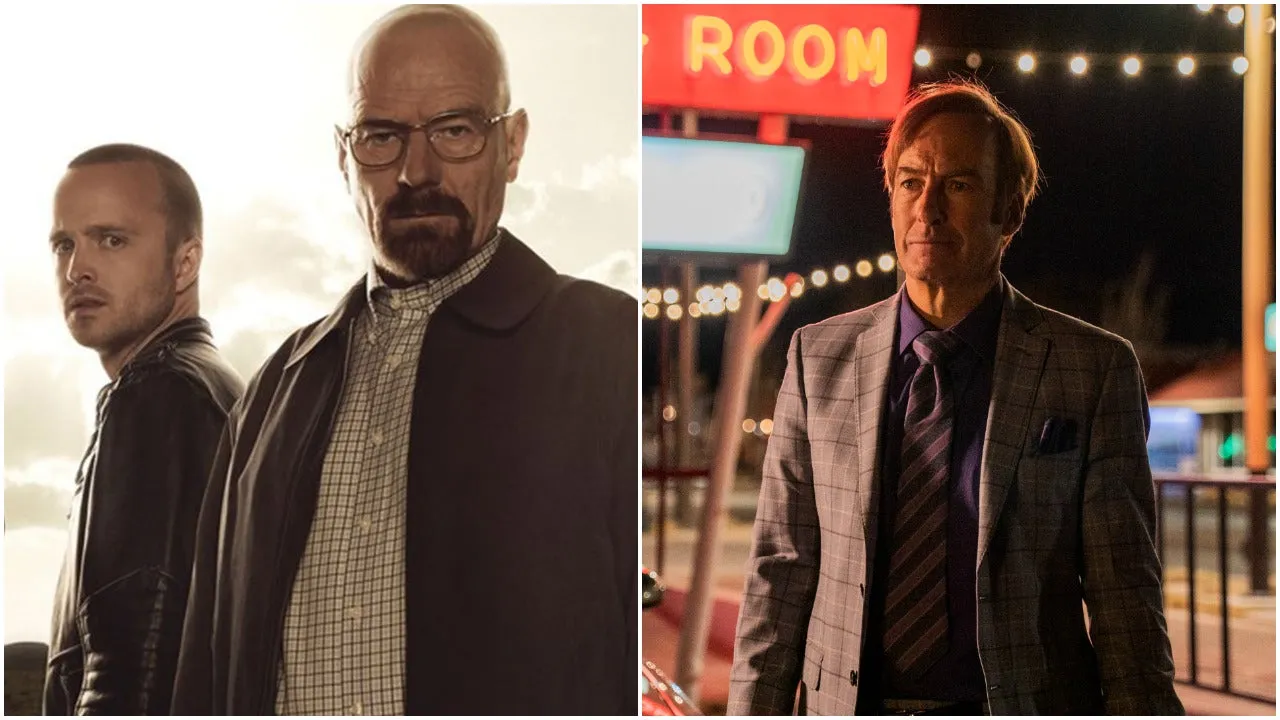
1.4 million people watched the pilot to Breaking Bad in 2008.
6.9 million people watched the pilot for the prequel Better Call Saul in 2015.
10.3 million watched the finale for Breaking Bad, live as it came out.
Breaking Bad and Better Call Saul have went on for now 14 years, with 125 total episodes between the series, which comes to an end tonight.
While both shows were extremely successful, the series almost was cancelled in both season’s one and two for Breaking Bad.
The reason is in season one, the series actually had a pretty big dip.
1.4 million views on the pilot and episode two had an uptick, hitting 1.5m viewers, but after that it dropped to averaging 1m viewers on premiere nights, with the exception being 1.5m on the season one finale.
Season two was also rough, with ratings averaging 1.35 million viewers per episode.
Which the strange thing is it didn’t pickup much from there.
Breaking Bad season four averaged only 2m viewers per episode and the finale spiked at 2.9 million viewers.
The Walking Dead, which was the same network with AMC averaged 5.5 million viewers per episode in season one, showing while it was on the air side by side with Breaking Bad, ratings were about double what Breaking Bad had until the final season.
Also, these ratings for AMC during Breaking Bad’s time were actually considered low for cable.
Two and a Half Men season nine pulled in 16 million viewers per episode on average, despite Charlie Sheen leaving and the less popular Ashton Kutcher continuation happened.
Big Bang Theory was also pulling in 23 million viewers an episode at the time.
Enter Netflix
Netflix launched streaming in 2007 and Breaking Bad was one of the earlier shows to go on, with Netflix doing an AMC deal.
Netflix had 26 million subscribers in 2012, which grew 38% by 2013, hitting 36 million users.
Breaking Bad was the most suggested show on, being one of the few they’d offer to stream at the time.
From that, in the rapid growth of Netflix from 2011-2013, which was largely due to college students watching on their computers and not having actual TV’s, the show grew heavily.
Big thing though is why did so many people love the show when streaming, but it never had the same appeal when coming out weekly on AMC?
I think the best reason for this would actually be Better Call Saul.
Better Call Saul started strong in the ratings, getting nearly 7 million viewers on premiere.
That number dropped rapidly though in season one, where ratings went to 3.5m and closed season one at 2.5m viewers, which was comparable to pre Netflix boom Breaking Bad.
The show also hasn’t been a huge ratings hit, where despite a recent spike for the final season, the show has had 1.5m viewers on average per episode, which is below any Breaking Bad season, minus the first one.
The ratings are also half of what the ratings for Walking Dead are now, where season 10 averaged 3 million viewers, which is a series many said it collapsed.
Patience
Breaking Bad and Better Call Saul are both in a weird way black comedies and running stories, where the payoffs take multiple episodes to happen. Many episodes being fairly calming things, where audiences are watching deep psychological breakdowns of people with crime.
It’s not a show about shooting zombies, nerds with a hot neighbor or Charlie Sheen dating girls in away that’d get cancel cultured today.
It’s work that has a pretty tough payoff to create something great.
Which that’s the value of what Netflix did, making the binge model, where they dump everything at once, versus weekly episodes.
This makes it so a series can be made more like a book, versus a series in which every episode needs some resolution and cliffhanger to bring people back in.
With TV in the 90s, producers told shows to not even give episodes major continuity, because they were so concerned with residuals, they wanted people to be able to watch the show at season 3 or season 7 for reruns and not tell the difference.
This is why Breaking Bad worked.
Netflix created a totally new model to consume, inventing the term binge watching and that made something which allowed shows that’d otheir wise get cancelled for losing patience a chance to succeed.